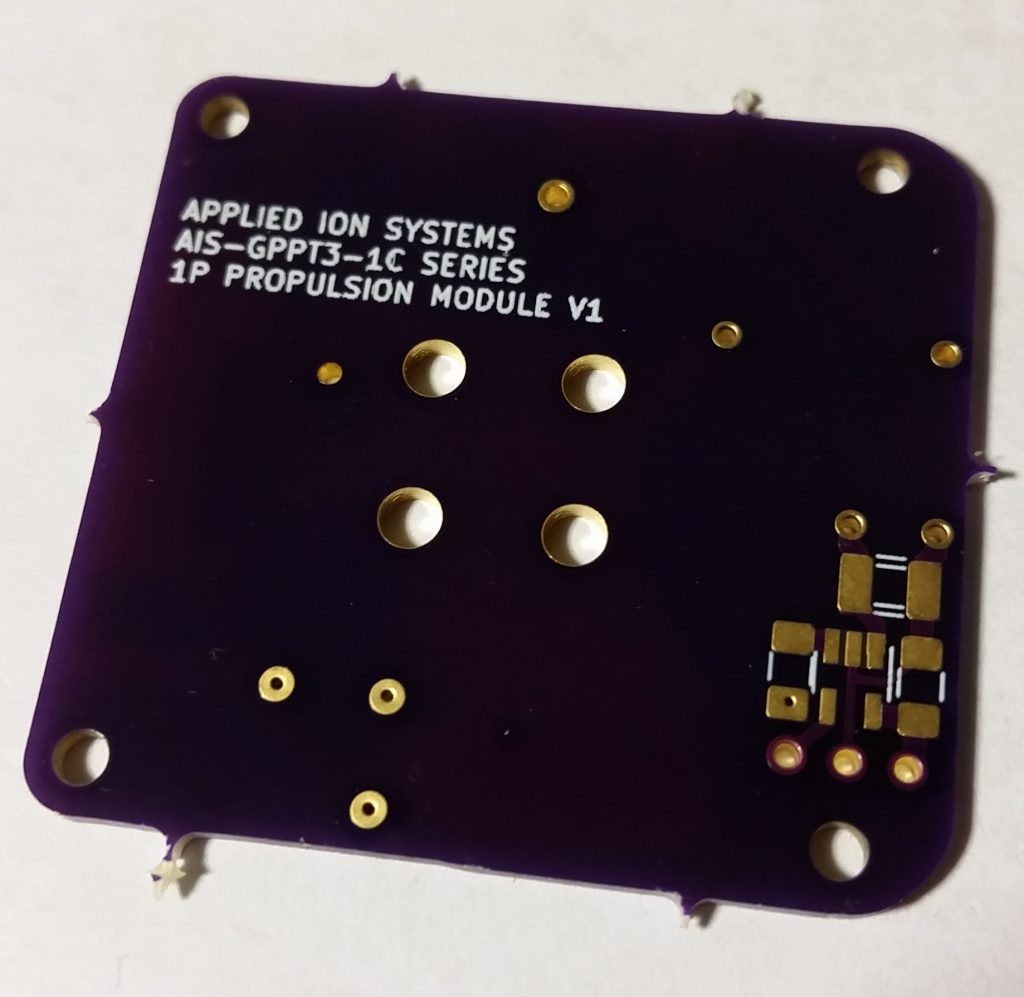Quick update regarding the recent propulsion module development. The V1 PCBs for the AIS-gPT3-1C Integrated Propulsion Module are in! Major shout-out to OshPark for their fantastic board work as always, in addition to sponsoring these boards, helping push a new frontier of radical low-cost, open source electric propulsion!
These boards will be used for initial prototyping and verification of the integrated propulsion module, confirming not only if the layout and spacing is enough to prevent arc-overs, but for the entire design, allowing for the first time at Applied Ion Systems, a thruster test using actual deployable power and control electronics with a thruster assembly. Several tests will be performed on the boards. The first tests will be on the bench in open atmosphere. These will be to confirm functionality of the load switch for enabling and disabling the EMCO power supply, as well as verifying the EMCO power supply output. In addition, atmospheric power-on will also initially verify if board spacing is enough that arcing won’t occur between traces. After power-on, the ignition circuit will be tested for functionality and output. The goal is a minimum of 4kV output, fully controlled and triggered by an Arduino, without interference to the Arduino itself. Once it passes these initial atmospheric qualifiers, preparations will be made for testing in high vacuum.
High vacuum testing will be performed in several stages. The first stages will involve the full module with thruster, with the Arduino controlling the module from outside the chamber. Initial ignition must be verified at high vacuum with standard Teflon fuel. Once this is complete, a host of tests will be performed, comparing the effect of the magnetic nozzle on thrust, as well as the various experimental fuels. Impulse-bit and lifetime will be measured and characterized for all experimental configurations. Finally, after all of this, the best fuel will be selected, and a new, flight-module PCB will be made with the new stunning black PCB and clear solder-mask option by OshPark will be made, in addition to any necessary changes to the PCB from testing. At this stage, the flight-module will become available to the PocketQube community. In addition, a new round of testing will be started, with a full PQ frame in the chamber, housing both the thruster module and control electronics for some more advanced testing.



